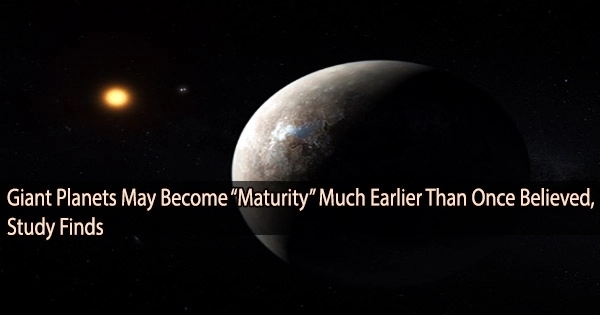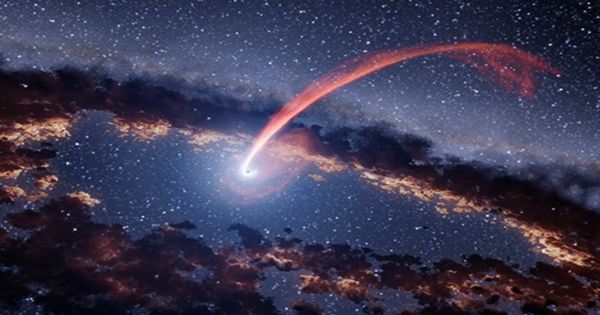Researchers from the Instituto de Astrofísica de Canarias (IAC), along with scientists from other institutions in Spain, Italy, Germany, Belgium, the United Kingdom, and Mexico, have been able to measure the masses of the big planets in the 20 million year old V1298 Tau system.
This is the first time that masses for such young giant planets have been found, indicating that they have already reached their final sizes relatively early in their existence.
They used radial velocity data from the CARMENES at the Calar Alto Observatory and the HARPS-N spectrographs at the Roque de los Muchachos Observatory (ORM) for their investigation.
The results are published today in the journal Nature Astronomy.
The study, led by the IAC researcher Alejandro Suárez Mascareño, reports the measurement of the masses of two giant planets that orbit the young solar-type star V1298 Tau. They were discovered in 2019 by a team lead by Trevor David (JPL) using data from NASA’s Kepler space telescope, which allowed the measurement of their sizes, slightly smaller than Jupiter, and of their orbital periods, 24 and 40 days for V1298 Tau b and e, respectively.
“The characterization of very young planets is extraordinarily difficult,” says Alejandro Suárez Mascareño, first author of the publication. The parent stars have very high levels of activity and until very recently it was unthinkable to even try.
And he adds: “Only thanks to the combination of detections made with space telescopes, combined with intense radial velocity campaigns from Earth-based observatories and the use of the most advanced analysis techniques, it was possible to begin to see what is happening in such early stages of the evolution of planetary systems.”
We still do not know if V1298 Tau is a normal case and its evolution is similar to that of most planets or if we are facing an exceptional case; if this were the normal scenario, it would mean that the evolution of planets like Jupiter and Saturn could have been very different from what we think.
Nicolas Lodieu
In reality, it was necessary to distinguish the signals produced by these planets from the nearly ten times bigger signal produced by the star’s activity in order to make the new measurements of the planetary masses.
The research reveals a startling resemblance between the masses and radii of the planets V1298 Tau b and c and those of the massive planets in our solar system or in other older extrasolar systems. We can test existing theories on the development of planetary systems using these measurements, which are the first to be made of such young giant planets.
“For many years, theoretical models have indicated that giant planets begin their evolution as bodies with a larger size, and later they contract over hundreds millions or even billions of years,” explains Víctor J. Sánchez Béjar, researcher at the IAC and co-author of the work. “We now know that they can actually reach a size similar to that of the planets in the Solar System in a very short time,” he notes.
Researchers can learn more about what transpired when our solar system was still in its infancy by studying young systems.
“We still do not know if V1298 Tau is a normal case and its evolution is similar to that of most planets or if we are facing an exceptional case; if this were the normal scenario, it would mean that the evolution of planets like Jupiter and Saturn could have been very different from what we think,” comments Nicolas Lodieu, a researcher at the IAC and also a co-author of the work.
Thus, the findings of this research contribute to a better understanding of the early evolution of planetary systems like our own.
The study needed the cooperation of numerous observatories and institutions from various nations in addition to a large amount of observational work to measure these masses.
It has been necessary to combine radial velocity measurements from various instruments such as the high-resolution HARPS-N ultrastable spectrograph, installed at the Roque de los Muchachos Observatory’s Telescopio Nazionale Galileo (TNG); the CARMENES high resolution spectrograph, installed at the Calar Alto observatory; the HERMES spectrograph, installed on the Mercator telescope, also at the ORM; and the SES spectrograph, installed in the STELLA telescope at the Teide Observatory.
Observations taken from the Las Cumbres Observatory, a network of telescopes located around the world, have been used to continuously monitor the variations of the star’s activity.
In addition to the researchers Alejandro Suárez Mascareño, Victor J. Sánchez Béjar and Nicolas Lodieu, from the IAC researchers Rafael Rebolo López, Felipe Murgas, Jonay González Hernández, Carlos Cardona Guillén, Borja Toledo Padrón, Patricia Chinchilla, Emma Esparza Borges, Mahmoud Oshagh, Enric Pallé and Hannu Parviainen.
















